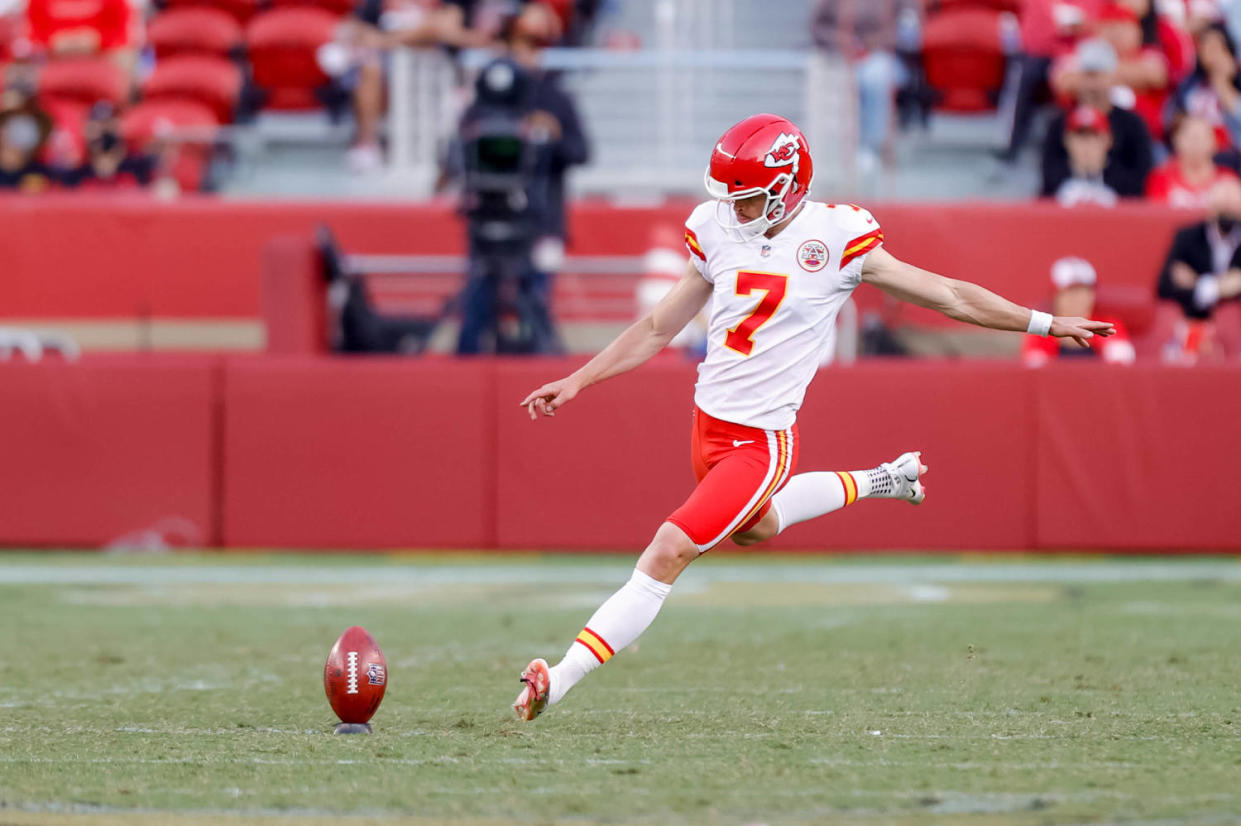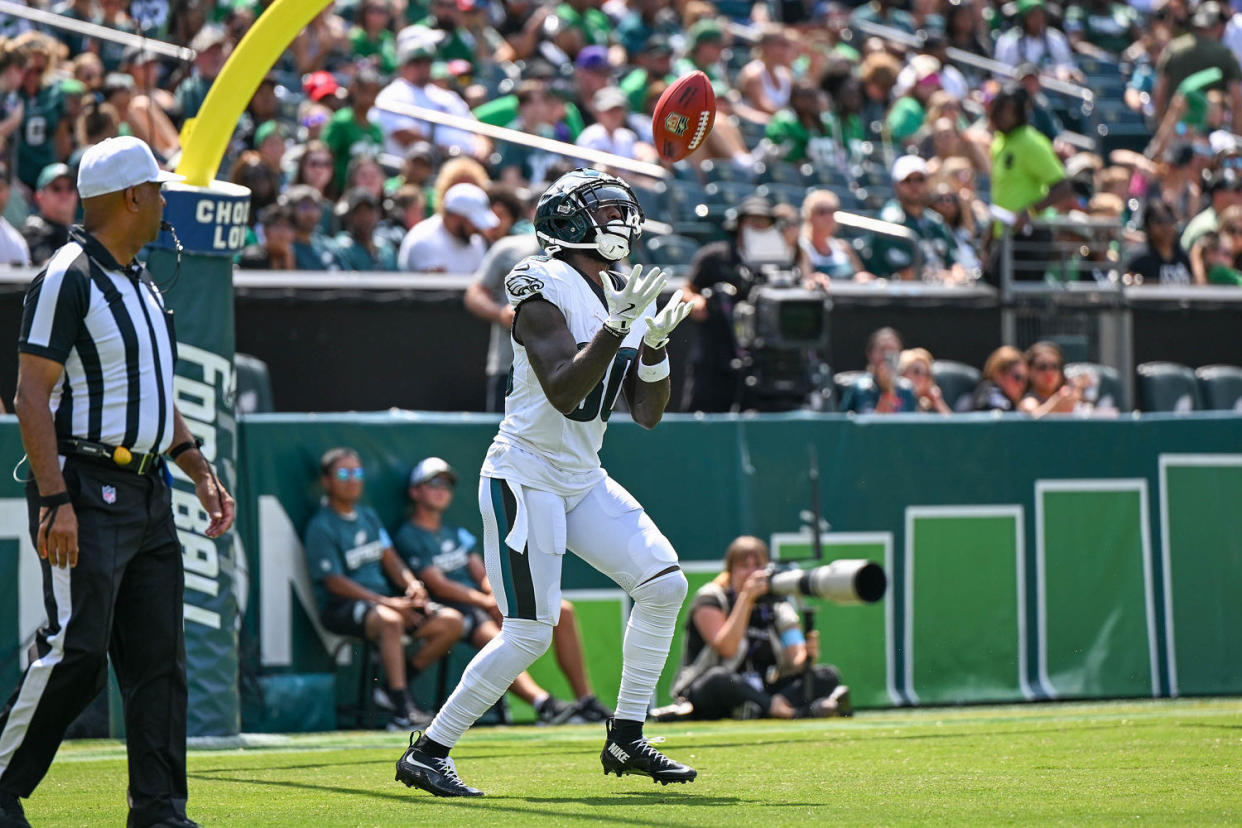What's a 'landing zone'? What to know about the NFL's changed kickoff rule

Get ready to add the term "landing zone" to your football vocabulary when the NFL season kicks off.
The NFL has radically altered the kickoff rule for this season, which officially begins when the Kansas City Chiefs take on the Baltimore Ravens on Sept. 5 on NBC in a rematch of last season's AFC championship game.
Teams have been acclimating during the preseason to what the NFL calls the new "dynamic kickoff" rule as they try to figure out what works best.
Here's what to know about the new rule.

Why did the NFL change the kickoff rule?
The 2023 season had the lowest kickoff return rate in history, so the league decided to take action to make it a more important part of the game.
The NFL also deemed that kickoffs had an "unacceptable" rate of injuries due to the high-speed collisions that came from the players on the kicking team having a long, sprinting start before the return team even fielded the ball.
Rule changes were made to reduce the amount of space and speed on kickoffs to make them more like a regular play from scrimmage and cut down on injuries.
Changes were also made to create more returns rather than just teams taking a touchback or waving for a fair catch on kickoffs.
What is the new NFL kickoff rule?
An area known as the landing zone has been created, which is between the receiving team's goal line and its 20-yard line.
NFL broadcasts in the preseason have usually employed a graphic showing a rectangle around the landing zone or highlighting it in a different color than the field.
Here are the new rules surrounding it.

Any kick into the landing zone must be returned.
If the ball is kicked short of the landing zone or out of bounds, it will automatically be placed on the receiving team's 40-yard line.
Any kick that hits the landing zone and then bounces into the end zone must either be returned or downed, so teams can't just let the ball bounce into the end zone and get an automatic touchback if it hits the landing zone first. If the return team downs the ball in the end zone, it goes to the 20-yard line.
If a kicker booms one out of the back of the end zone on the fly, the return team gets the ball at the 30-yard line. Under previous rules it had been placed at the 25-yard line, so it's penalizing kicking teams another five yards if they kick the ball out of the end zone.
A kick that lands in the end zone and then bounces out of bounds or is downed by the receiving team will be placed at the 30-yard line.
Teams can only attempt onside kicks in the fourth quarter, and they have to declare they are doing it to the officials, which takes away the surprise element.
There are also new guidelines for where teams line up on the kickoff and how soon the kicking team's players can start running down the field.
The 10 players on the kicking team besides the kicker all have to have at least one foot on the receiving team's 40-yard line and cannot move until the kick hits the ground or a player in the landing zone or the end zone. Previously the players could start sprinting downfield the instant the kicker kicked the ball. This change is part of the effort to lessen the amount of high-speed collisions that cause injuries.
Teams that are receiving the ball are allowed to have a maximum of two returners, who can line up anywhere in the landing zone. They must have at least seven players on their own 35-yard line, so they're only five yards away from the players on the kicking team. None of those players can move until the ball hits the ground or a player in the landing zone or end zone.
How has the new kickoff rule looked in the NFL preseason?
So far the new rule has produced many more kicks being returned, plus a good amount of big plays. However, no player returned any of the 420 kickoffs in the preseason for a touchdown.
The NFL shared that 70.5% of the kickoffs across 49 preseason games were returned, compared to 54.8% in last year's NFL preseason. There also were 18 returns of more than 40 yards, the most in 10 years, according to the NFL.
Isaac Guerendo takes the kickoff back 93 yards!
It's longest dynamic kickoff return of the preseason.
📺: #SFvsLV on @NFLNetwork
📱: Stream on #NFLPlus pic.twitter.com/qNWHGNtYZ8— NFL (@NFL) August 24, 2024
Receiving teams also had better starting field position under the new rule, per the NFL. The average drive started at the 28.8-yard line, an increase of 4.6 yards from last year.
This article was originally published on TODAY.com
